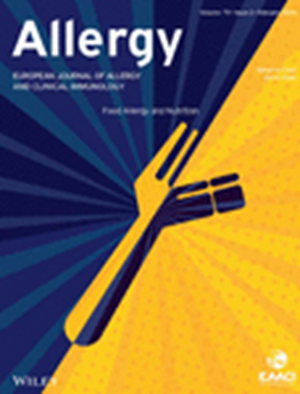Alopecia areata exhibits cutaneous and systemic OX40 activation across atopic backgrounds
Abstract
Background
Alopecia areata (AA) is a chronic, nonscarring hair-loss disorder associated with significant quality-of-life impairment and limited treatment options. AA has been recently linked to atopy and shown to exhibit both Th1- and Th2-driven inflammation. However, a comprehensive molecular and cellular characterization across blood and scalp compartments in both atopic and nonatopic patients is lacking.
Methods
Lesional and nonlesional scalp biopsies obtained from AA patients with (n = 16) or without (n = 20) atopic history, and 17 demographically matched healthy controls were analyzed with RNA-seq, RT-PCR, and immunohistochemistry. Flow cytometry was also performed on peripheral blood mononuclear cells (PBMCs) from a subset of patients. Differential expression was defined using |fold-change| > 1.5 and false-discovery rate <0.05.
Results
AA scalp exhibited robust upregulation of Th1- (IFNG, CXCL9, CXCL10, CXCL11) and Th2-related products (CCL26, CCR4, IL10, IL13, TSLP, TNFRSF4/OX40) and shared downregulation of hair keratins, regardless of atopic background, with variable Th17/Th22 modulation. AA patients with atopy exhibited greater inflammatory tone and Th2-skewing (IL10, IL13, IL33, CCR4, CCL26). Disease severity correlated significantly with immune and hair keratin biomarkers and with perifollicular cellular infiltrates. Cutaneous OX40/OX40L upregulation was paralleled by increases in circulating OX40+ and OX40L+ leukocytes, regardless of atopic background.
Conclusion
Our results suggest some atopy-associated immune differences in AA and highlight the OX40 axis as a potential novel therapeutic target that may broadly benefit AA patients.


 求助内容:
求助内容: 应助结果提醒方式:
应助结果提醒方式:


